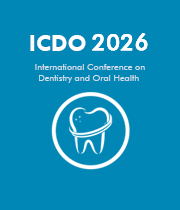Title: Assessment of the clinical effectiveness of botulinum toxin type A in oral and maxillofacial surgery
Abstract:
Background: Botulinum Toxin (botox) has been used medically to manage various conditions such as chronic migraines, overactive bladder, hyperhidrosis to name but a few. This toxin works by inhibiting the release of a chemical called acetylcholine, which is responsible for muscle contraction. By blocking this release, botox relaxes the muscles, reducing spasm and other symptoms. Temporomandibular joint disorders (TMJD) are common affecting 5-12% of the population, it is multifactorial and a number of surgical and non-surgical management options are available. Surgical options come with their own risks and so the non-surgical option of botox was explored for it’s effectiveness in Oral and Maxillofacial Surgery.
Objective: The aim is to assess the clinical effectiveness of botulinum toxin type A (Botox) in Oral and Maxillofacial surgery, focusing on it’s use in managing various conditions within the specialty such as temporomandibular joint disorder, bruxism, and hyperfunctional conditions.
Methods: A retrospective review was conducted on 50 patients who received botox as part of their treatment between July and December 2024. Clinical outcomes, including symptom relief, functional improvement, and patient satisfaction, were evaluated through medical records and patient feedback. Additionally, complications and adverse effects were recorded to assess the safety profile of the treatment.
Results: Botox provides significant symptomatic relief in conditions such as bruxism and temporomandibular joint disorders with patients reporting improvements in pain reduction and jaw function. The clinical effectiveness of botox is consistent with existing literature in the field.
Conclusion: This highlights the benefits of botox in Oral and Maxillofacial Surgery, offering a valuable non-surgical option for managing specific conditions. Further prospective studies are recommended to standardise treatment protocols and fully evaluate long-term outcomes.




